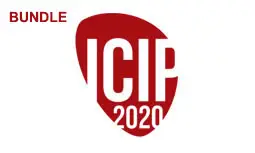FEW-CLASS LEARNING FOR IMAGE-CLASSIFICATION-AWARE DENOISING
Kei Mamiya, Takamichi Miyata
-
Members: FreeSPS
IEEE Members: $11.00
Non-members: $15.00Length: 12:00
28 Oct 2020
The accuracy of image classification networks decreases substantially in noisy situations such as low light environments. A simple solution to this problem is to integrate an image denoising network as a preprocessing operation before classification and then to retrain the classifier to improve the classification accuracy. However, this straightforward approach suffers from excessive training time because the the denoising network requires the entire dataset to conduct end-to-end training. In this paper, instead of using classification accuracy as a loss function, we propose using the difference of the outputs of the hidden layer of the image classification network. This loss function, known as feature loss or perceptual loss, allows us to train the denoising network using only limited images containing extremely few classes from the dataset. The experimental results show that the proposed method dramatically improves the classification accuracy, when we use only a few classes (from 2.5% to 10% of the original dataset) for training. This approach is effective on previously unseen classes even when the image classifier network has been changed by fine-tuning.



